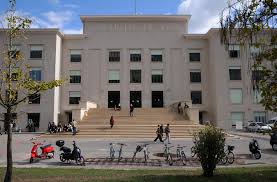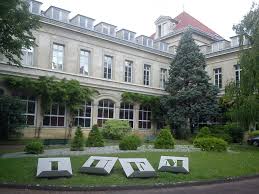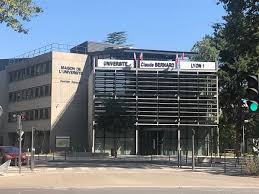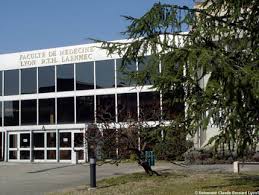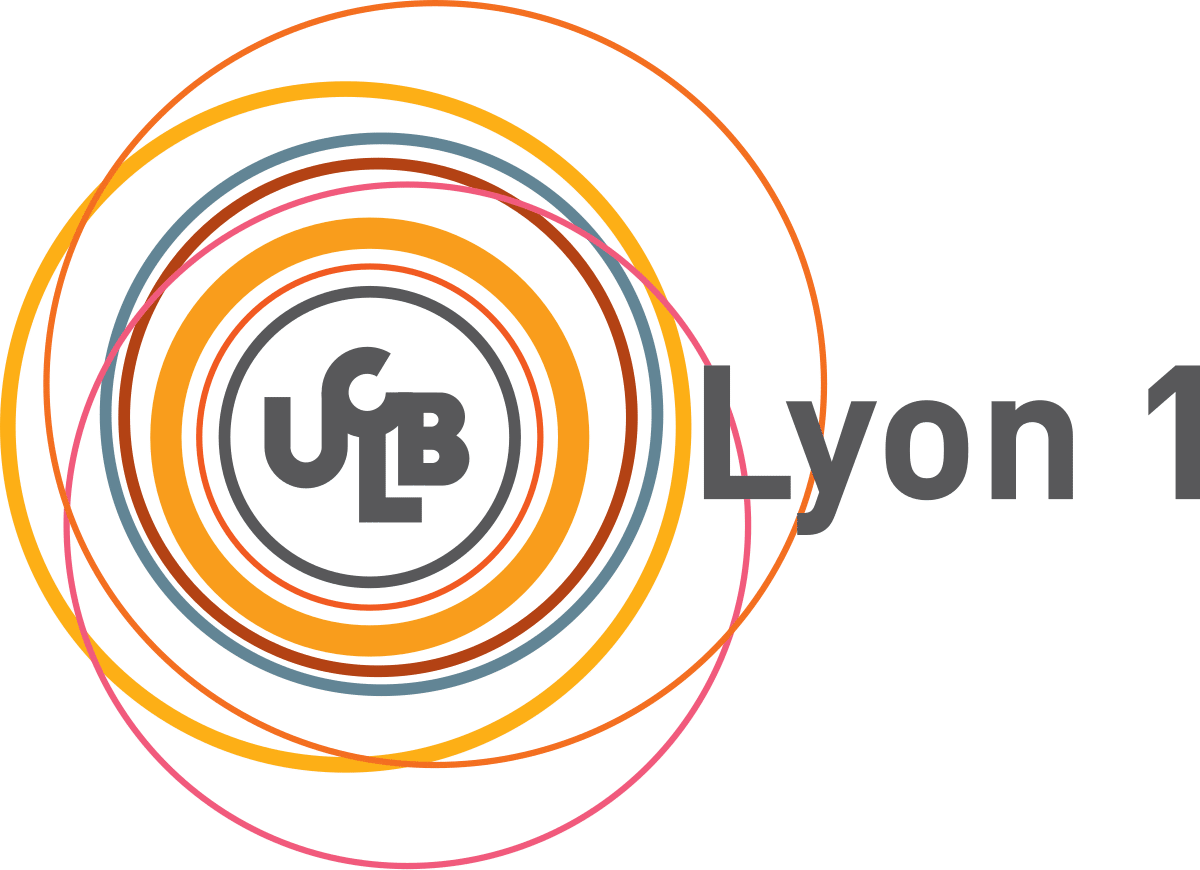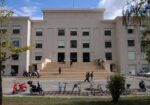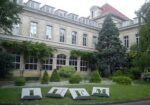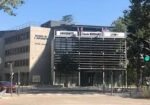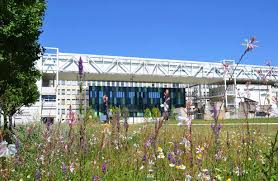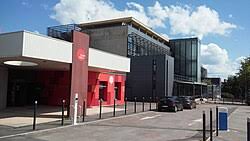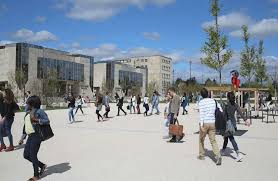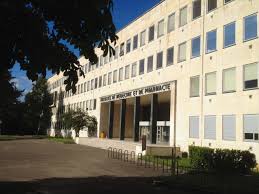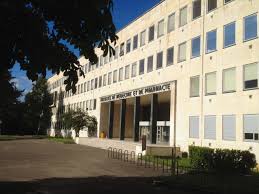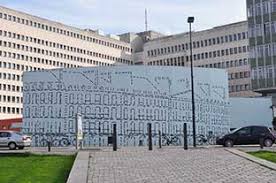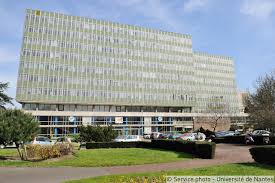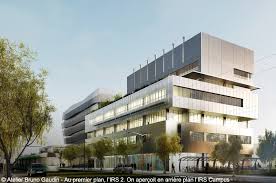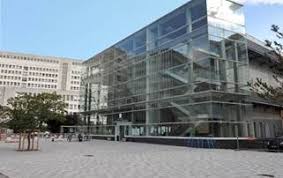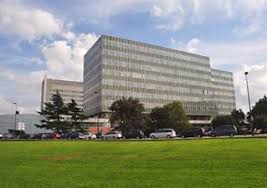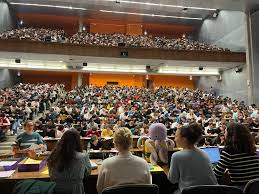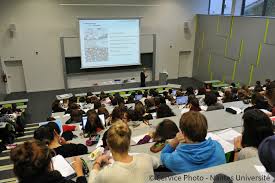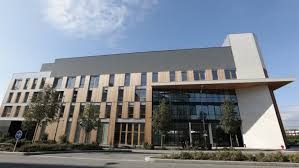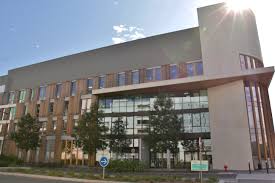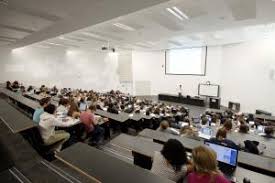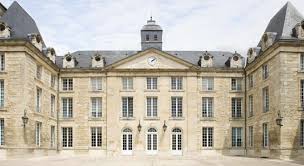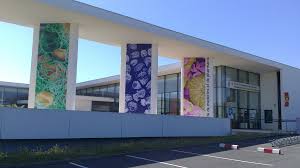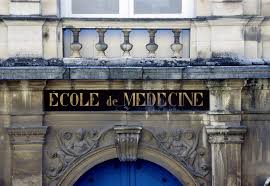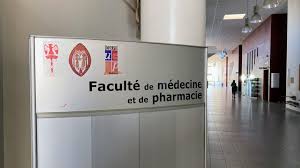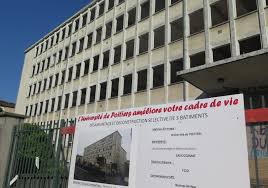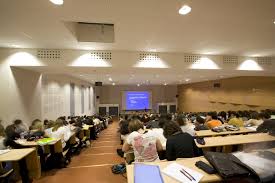Faculté de Médecine Laennec, Université Claude-Bernard-Lyon-I, Lyon
While cities like Paris, Montpellier, Oxford, or Salamanca are famous for their medieval universities and traditional, centuries-long scholastic traditions, Lyon did not historically emerge as a big university center. In the Middle Ages, it did not have institutions like the Sorbonne or the celebrated school of medicine at Montpellier.
About Faculté de Médecine Laennec, Université Claude-Bernard-Lyon-I Lyon
It developed into a university city much later. The turning point came with the law of 10 July 1896, which mandated the unification of independent faculties of science, medicine, law, and arts into one university structure. The oldest among these had originated in 1808, with the establishment of the Faculty of Science.
Faculté de Médecine Laennec, Université Claude-Bernard-Lyon-I Lyon – Table of Contents
- About
- Advantages
- Ranking
- Departments And Course Duration
- Facilities And Infrastructure
- Fee Structure
- Required Documents
- Eligibility Criteria
- Admission Process
- Benefits
- Privileges And Benefits for Indian Students
- FAQ’s
The Université Claude Bernard Lyon 1 was officially created by decree in December 1970. It gradually incorporated over time a number of important academic and research locations:
Grange Blanche – Faculty of Medicine, integrated in 1930.
Doua Campus – Faculty of Science, constructed during 1963–1964 on Villeurbanne’s old Grand Camp race track.
Lyon Sud – Faculty of Medicine, established in 1970.
Domaine de la Buire – Training and Research Unit (UFR) of Medicine and Odontology, constructed in 1974.
Lyon Observatory – Founded in 1878 in Saint-Genis-Laval and affiliated with the university in 1899.
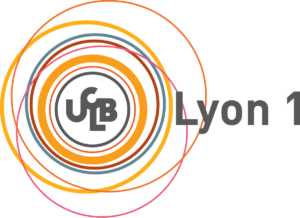
Faculté de Médecine Laennec, Université Claude-Bernard-Lyon-I Lyon Accreditations, Affiliations, Recognitions
Marine Biology Station at Tamaris-sur-Mer (near Toulon in Seyne-sur-Mer), founded in 1890 and subsequently affiliated with the university.
With the expansion of its research laboratories and the rise in the number of students, the university expanded further in its second development phase. This comprised the IUT of Villeurbanne (rue de France), the IUT departments at Bourg-en-Bresse, expansions in Roanne, and the Gerland site, which since 2005 has been home to the renowned Institute de Science Financière et assurances (ISFA).
Claude Bernard – The University’s Namesake
The university is dedicated to Claude Bernard, France’s most renowned physiologists, who is considered the “father of modern physiology.” Born in 1813 at Saint-Julien-en-Beaujolais (Rhône), Bernard had humble beginnings. Having studied at Villefranche and Theissen, he became a compounder at the pharmacy of Millet in Lyon-Vaise. He embarked on his studies in 1834 when he obtained his baccalaureate, and in 1839, he entered medical studies.
A student of François Magendie, Bernard established himself very soon. In 1845, he received the Academy of Sciences Prize for Physiology, and in 1853, he was awarded his doctorate with a revolutionary thesis: “Research on a new function of the liver considered to produce sugary matter in humans and animals.” His research established the glycogenic role of the liver and formed the cornerstone of the pathogenic theory of diabetes.
Advantages of Studying in Faculté de Médecine Laennec, Université Claude-Bernard-Lyon-I Lyon
Academic & Research Strengths
Reputation and Innovation: Université Claude-Bernard Lyon 1 is a top French university, highly regarded in health and science, and listed among the world’s most innovative universities, with high levels of publications and patent applications.
Research Focus: Collaboration with businesses and other higher education institutions to create joint research laboratories, innovative platforms, and success in state-of-the-art areas, giving students access to cutting-edge opportunities.
International Opportunities
English-Taught Programs: Université Claude Bernard Lyon 1 has diplomas, such as master’s degrees, partly or wholly taught in English, making it a potential draw for international students.
Global Network: Being part of the Université de Lyon, a large French university network, students have access to a wider academic network and existing international relations.
Student Experience
Comprehensive Resources: The university offers access to extensive resources, such as several campuses, university libraries, and multiple laboratories for the facilitation of student learning and research.
Accessibility: The Faculté de Medicine Laënnec itself has accessible facilities, such as a wheelchair-accessible entrance and car park
Latest Notifications:
Faculté de Médecine Laennec, Université Claude-Bernard-Lyon-I Lyon – Ranking
When Magendie died in 1855, Bernard succeeded to his illustrious position at the Collège de France, where he worked until 1868, when he was appointed as a professor at the Natural History Museum. In that same year, he was elected to the Académie Française, an unusual distinction for a scientist. Even though Bernard was famous, he lived in hardship throughout his life, frequently short of money to pursue his research to completion.
I have been familiar with the anguish of a scientist, through lack of funds unable to conduct the experiments he has planned and forced to leave research unfinished or abandon it.
He published in 1865 his masterwork Introduction to the Study of Experimental Medicine, in which he enshrined the principle of scientific method: observation – hypothesis – experimental confirmation. This was not merely to revolutionize medicine but also to furnish the philosophical foundation for contemporary scientific research.
In his old age, Bernard fell gravely ill and died in February 1878. In appreciation of his gigantic contribution to science, Léon Gambetta asked that he be given a state funeral—the first to be given to a scientist in France. Claude Bernard lies today at the Père-Lachaise Cemetery in Paris, a monument to his immortal legacy.
Departments And Course Duration in Faculté de Médecine Laennec, Université Claude-Bernard-Lyon-I Lyon
The medical program in France follows a national curriculum divided into three cycles. The Faculté de Médecine Laennec is one of the medical schools within the larger Université Claude Bernard Lyon 1, which is a leading university for sciences and health.
Course Duration and Structure (Parcours MBBS/Médecine)
The total duration to become a fully qualified general practitioner (Médecin Généraliste) is 9 years after the baccalaureate (high school diploma).
The path is structured in three key cycles:
1. First Cycle (Premier Cycle des Études de Medicine) – PCEM
- Duration: 3 Years (Common to medical, dental, midwifery, and physiotherapy programs)
- Year 1 (PACES/Parkours Specified Accès Santé): The first year is a highly competitive common health track. All students take the same courses and must pass a rigorous national ranking exam (concours) at the end of the year. Only a limited number of top-ranking students are allowed to continue into the second year of medicine.
- Years 2 & 3 (DFGSM2 & DFGSM3): These years focus on foundational medical sciences. Students receive the Diplôme de Formation Générale en Sciences Medicals (DFGSM) at the end of the third year, equivalent to a Bachelor’s degree level.
2. Second Cycle (Deuxième Cycle des Études de Medicine) – DCEM
- Duration: 3 Years (Years 4, 5, and 6)
- Focus: This is the core clinical training phase. Students, now called externes, rotate through hospital departments and begin paid clinical placements. They also continue theoretical coursework.
- Final Outcome: At the end of the 6th year, students must pass the Prevue’s Class antes Nationals (ECNi), a national ranking exam that determines their choice of medical specialty and the location of their residency. Upon passing, they receive the Diplôme de Formation Approfondie en Sciences Medicals (DFASM).
3. Third Cycle (Troisi me Cycle des Études de Medicine) – Internet / Resident
- Duration: 3 to 5+ Years
- General Medicine (Medicine Générale): 3 years of residency. Upon completion, residents defend a thesis to obtain the Diplôme d’État de Docteur en Medicine (State Diploma of Doctor of Medicine), which is the full qualification to practice.
- Specialist Medicine (e.g., Cardiology, Surgery, Pediatrics): 4 to 5 years of residency (e.g., 4 years for Pediatrics, 5 years for Cardiology, 6 years for Neurosurgery). This also concludes with the State Diploma.
Departments
The faculty is organized into departments that oversee teaching and research. Students will have courses and clinical rotations across all these core disciplines.
- Medicine Interne / Medicine Générale (Internal Medicine / General Medicine)
- Chirurgic (Surgery) –
- General and Digestive Surgery
- Orthopedic Surgery and Traumatology
- Cardiovascular Surgery
- Urological Surgery
- Pediatrics
- Gynecology-Obstetrics
- Anesthesiology-Intensive Care
- Psychiatric Psychiatry
- Cardiology
- Dermatology
- Geriatrics
- Neurology
- Oncology
- Radiology and Medical Imaging
- Medical Biology / Laboratory
- Emergency Medicine
- Anatomy
- Physiology
- Biochemistry
- Pharmacology
- Immunology
- Histology-Embryology
- Bacteriology-Virology
- Parasitology
- Public Health and Epidemiology
- Forensic Medicine and Health Law
International Students (especially non-French speakers):
- Language of Instruction: The entire program is taught in French. A high level of proficiency (minimum C1 level according to the Common European Framework) is absolutely mandatory to understand complex courses, communicate with patients during rotations, and pass exams.
- Admission for Foreigners: The process is highly complex and quota-based. Non-EU students must apply through a specific procedure called the “Procedure de demanded admission peelable (DAP)” and may be subject to a strict national quota (numerus clauses for foreigners).
- MBBS vs. French Diploma: The French program leads to a Diplôme d’État de Docteur en Medicine, not an “MBBS” degree. It is the equivalent qualification but follows a different structure and naming convention.
Latest Updates:
Facilities And Infrastructure in Faculté de Médecine Laennec, Université Claude-Bernard-Lyon-I Lyon
Campus & Infrastructure
Laennec Campus (Lyon Nord):
Principal campus of the Faculty of Medicine, located in the 8th district of Lyon, near the Hospices Civils de Lyon (university hospitals). A center for medical education, research, and clinical exposure.
Lyon Sud Campus:
Second medical education facility, with direct access to Centre Hospitalier Lyon-Sud, providing students with practical clinical exposure.
Associated Hospitals:
Students are privileged to have access to one of Europe’s biggest hospital networks, Hospices Civils de Lyon (HCL), composed of Édouard Herriot Hospital, Lyon Sud Hospital, Croix-Rousse Hospital, and specialized centers.
Academic Facilities
Lecture Halls & Classrooms: State-of-the-art amphitheaters with latest-generation audiovisual equipment, interactive smart boards, and high-speed internet access.
Research Laboratories: State-of-the-art labs for biomedical sciences, molecular biology, genetics, and translational medicine.
Simulation Centers: Special areas for clinical simulations where the students can simulate diagnostic and surgical skills in a safe, controlled environment.
Anatomy & Dissection Halls: Advanced facilities with cadaveric dissection laboratories and 3D virtual anatomy software.
Libraries:
Bibliothèque de Santé Laennec: A principal medical library with huge digital and physical collections.
Access to e-journals, databases (PubMed, ScienceDirect), and specialized archives.
Clinical Training Facilities
Direct integration with Hospices Civils de Lyon (HCL) gives students clinical exposure from early on.
Rotations in general medicine, surgery, pediatrics, gynecology, emergency medicine, and specialties.
Centers of excellence in oncology, neurology, cardiology, and infectious diseases.
Student Amenities
Accommodation: Student flats run by CROUS Lyon, providing low-cost accommodation close to campuses.
Cafeterias & Dining: Campus dining rooms serving varied cuisine at subsidized student prices.
Sports & Recreation: Sports facilities via SUAPS Lyon 1, such as gyms, swimming pools, courts, and student clubs organized on campus.
Student Support Services: Academic advising, mental health facilities, career assistance, and international student affairs offices.
Technology & Innovation
E-learning Platforms: Moodle integration with digital learning spaces for hybrid teaching.
Virtual Classrooms & Remote Access: Particularly intensified through COVID-19, offering hybrid learning opportunities.
Medical Technology Integration: Access to robotic surgery units, advanced imaging systems (MRI, CT, PET), and AI-driven research platforms.
Extracurricular & Cultural Facilities
Cultural, artistic, and social activities actively promoted by student associations.
Volunteer opportunities in healthcare outreach programs.
International exchange programs under Erasmus+ and collaborations with international universities.
The Faculté de Médecine Laennec at Lyon 1 provides students with a contemporary, research-oriented, and clinic-integrated learning context, backed by France’s second-largest hospital system.
Official site For Faculté de Médecine Laennec, Université Claude-Bernard-Lyon-I Lyon: Click Here
Faculté de Médecine Laennec, Université Claude-Bernard-Lyon-I Lyon Fee Structure
Approximately Estimated fee will be 70 lakhs to 80 lakhs.
Required Documents For Admission in Faculté de Médecine Laennec, Université Claude-Bernard-Lyon-I Lyon
- Valid passport (minimum 18 months validity)
- 10th and 12th-grade certificates and mark sheets
- Birth certificate (translated into French if required).
- Ten passport-sized photographs
- Official invitation letter from the university
- Receipt of first-year tuition fee payment
- Medical fitness certificate
- Proof of French language proficiency (DELF/DALF, TCF, or equivalent, usually B2 level minimum).
Eligibility Criteria For Admission in Faculté de Médecine Laennec, Université Claude-Bernard-Lyon-I Lyon
Completion of higher secondary education (10+2) or equivalent with strong performance in Biology, Chemistry, and Physics/Mathematics.
Minimum age: 17 years at the time of admission.
French language proficiency (B2 level is generally required since the program is taught in French).
International students must also meet Campus France requirements and secure a long-stay student visa.
Admission Process For Faculté de Médecine Laennec, Université Claude-Bernard-Lyon-I Lyon
- Application Submission
- French & EU students apply via the Parcourse platform.
- International (non-EU) students apply via Études en France (Campus France).
- Document Verification
- Submission of transcripts, language proof, and other required documents.
- Entrance Pathway
- Students must enroll in the PASS (Parkours daces Specified Santé) or LAS (License Access Santé) system for the first year.
- At the end of this year, students sit for competitive examinations to qualify for entry into the second year of medicine.
- Selection & Admission Confirmation
- Admission is highly selective; only top-ranking students’ progress to the medical program.
- Selected students confirm their seat by completing formalities with the faculty.
- Visa & Enrollment
- International students obtain a student visa through Campus France and finalize university enrollment in Tours.
Get more details about the colleges in France: Click Here
Benefits of Studying in Faculté de Médecine Laennec, Université Claude-Bernard-Lyon-I Lyon
1. Great Academic Reputation
Université Claude Bernard Lyon 1 is among France’s top medical universities, known for excellence in clinical training, research, and teaching.
The university is named after Claude Bernard, the “father of modern physiology,” emphasizing its scientific and strong historical base.
2. Excellent Clinical Exposure
Direct affiliation with one of Europe’s largest hospital groups, Hospices Civils de Lyon (HCL), provides students with practical training in a wide range of specialties.
Early exposure to patient-centered learning equips students with real-world medical skills.
3. State-of-the-Art Research Opportunities
Host to top-ranking research institutions in biomedicine, oncology, neuroscience, and molecular biology.
Student opportunities to collaborate in innovative research projects with leading French and international researchers.
4. Up-to-Date Infrastructure & Learning Tools
Access to simulation centers, anatomy labs, virtual learning platforms, and advanced medical technologies such as robotic surgery and imaging systems.
Continuous learning is facilitated by digital libraries and global medical databases.
5. Comprehensive Medical Education
A well-designed program in basic sciences, clinical sciences, and specialty training.
Training focuses on evidence-based medicine and scientific method of inquiry, following Claude Bernard’s tradition.
6. International Recognition
Degrees are accepted throughout the European Union and valued internationally, allowing graduates to work or specialize further anywhere in the world.
Taking part in Erasmus+ mobility and foreign university partnerships.
7. Active Student Life in Lyon
Lyon is France’s second-largest city and a center for culture, food, and history, with a rich student life.
Inexpensive compared to Paris and with student-friendly accommodation, transport, and cultural life.
8. Friendly Student Services
Facilities for academic guidance, mental health counseling, career advice, and integration of international students.
Chances to become a member of student associations, medical societies, and cultural clubs.
9. Career Opportunities & Specialization
Training prepares students to meet requirements of general practice or highly specialized sectors.
Lyon graduates tend to find employment in top-ranked hospitals, research centers, and global healthcare organizations.
Faculté de Médecine Laennec of Lyon 1 has the best of academic quality, state-of-the-art facilities, a solid research ethos, and world-class clinical training, along with its prime location in one of France’s most vibrant student cities.
Privileges And Benefits for Indian Students in Faculté de Médecine Laennec, Université Claude-Bernard-Lyon-I Lyon
1. Global Recognition of Degree
- The MD/MBBS-equivalent degree from Lyon 1 is recognized across the EU and respected worldwide.
- Graduates can appear for licensing exams like USMLE (USA), PLAB (UK), AMC (Australia), and FMGE/NExT (India), ensuring global mobility.
2. High-Quality Medical Training
- Strong emphasis on clinical exposure through Hospices Civils de Lyon, one of Europe’s largest hospital systems.
- Early patient interaction and evidence-based medical training give Indian students a strong foundation for practice.
3. Affordable Education Compared to Western Countries
- Tuition fees in French public universities (including Lyon 1) are significantly lower than medical schools in the USA, UK, or Australia.
- Indian students benefit from subsidized tuition as international students, supported by the French government.
4. Scholarship Opportunities
- Eligibility for French and European scholarships such as Eiffel Excellence Scholarship, Campus France scholarships, and Erasmus+ mobility programs.
- Local funding opportunities for outstanding international students.
5. Cultural & Language Advantages
- Lyon is a multicultural, student-friendly city, with growing international student communities, including Indians.
- Indian students can learn or improve their French language skills, which enhances employability in Francophone countries (Africa, Canada, Switzerland, etc.).
6. Research & Specialization Pathways
- Lyon 1 offers opportunities to participate in advanced research projects in biomedicine, oncology, cardiology, and neurosciences.
- Pathways available for specialty training in France or abroad after the ECN exams.
7. Student Life & Support
- CROUS provides affordable student housing near campuses.
- Support services for international student integration, counseling, career advice, and cultural activities.
- Indian student associations in Lyon often help newcomers adjust socially and culturally.
8. Post-Graduation Opportunities
- Indian students can:
- Return to India and appear for the FMGE/NExT exam to practice.
- Continue postgraduate specialization in France or other EU countries.
- Explore global careers in research, clinical practice, or public health.
For Indian students, the Faculté de Médecine Laennec at Lyon 1 provides a blend of affordable world-class medical education, strong clinical exposure, global career opportunities, scholarships, and cultural adaptability—all within a vibrant city ranked among Europe’s best for students.
FAQ’s
What is the medium of instruction?
The primary language of instruction is French. International students must have proficiency in French (usually B2 level in DELF/DALF/TCF). Some exchange or research modules may be offered in English, but the main MBBS program is taught in French.
Is French language training available for international students?
Yes. Lyon 1 offers French language preparatory courses and integration programs. Many Indian students enroll in a language year (Cours de Langue Française) before starting medical studies.
What facilities are available for students?
- Access to Hospices Civils de Lyon hospitals for training.
- Simulation labs, anatomy halls, research centers, and medical libraries.
- Affordable student housing via CROUS Lyon.
- Sports, cultural clubs, and international student associations.
Is Lyon a good city for Indian students?
Yes. Lyon is ranked as one of the best student cities in France, with:
- Affordable living compared to Paris.
- A safe and welcoming multicultural environment.
- A vibrant Indian student community, offering social and cultural support.
Also Check:
